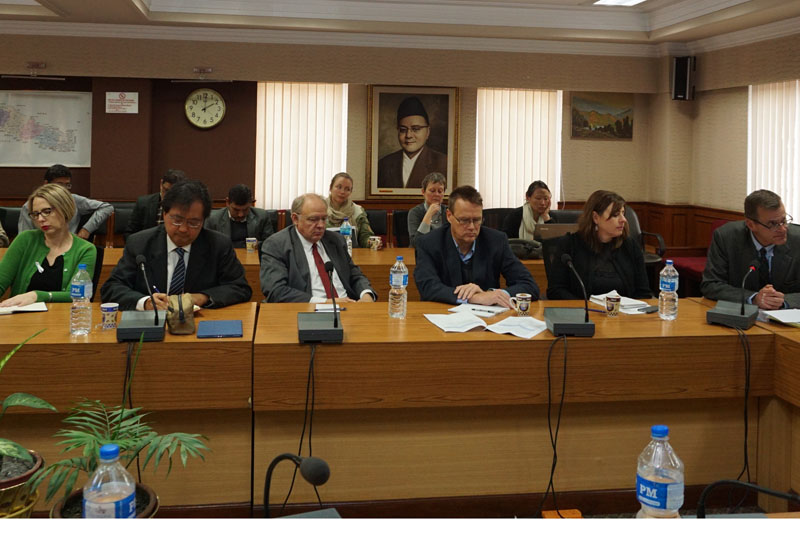WB approves US$ 185m credit for School Sector Development Plan
- SSDP will benefit over 70 lakh students and 180,000 ECD teachers
Kathmandu, March 28
The World Bank has approved US$ 185 million credit in support of Nepal’s efforts at improving equity, quality, efficiency, governance and management of basic and secondary education.
The credit will finance a slice of the Government of Nepal’s expenditures in implementing its seven-year School Sector Development Plan. Every year, the programme will benefit over 70 lakh students, over 180,000 teachers and Early Childhood Education and Development facilitators in over 30,000 community schools and centres across the country, said a press release issued by the World Bank today.
Over the past two decades, Nepal has made impressive gains in school education in terms of access, equity and completion rates. “For example, according to administrative data from the government’s education management information system, the net enrolment rate for primary education increased from 71 per cent in 1998 to 97 per cent in 2016,” it said.
Among girls it increased from 61 per cent to 97 per cent during the same period. The primary cycle completion rate increased from 58 per cent in 2004 to 80 per cent in 2016 while the percentage of out-of-school children among 5 to 12-year-olds decreased from 21 per cent to 15 per cent between 2004 and 2011, according to Nepal’s Central Bureau of Statistics.
Nepal also achieved gender parity in net enrollment rate at the primary, basic, and secondary levels and disparities in education access across income groups and ethnic and caste groups have also declined.
Meanwhile, between 2002 and 2015, the number of schools in the country increased by 30 per cent, leading to a decrease in the commute time to schools. During the same period, the number of teachers increased by 76 per cent, and, as a result, the pupil-teacher ratio declined from 36 to 25.
“Nonetheless, many challenges remain in areas of learning outcomes, equitable access and strengthening of the school system. The quality of education at the basic and secondary school levels remains low and unequal. Furthermore, learning outcomes vary significantly by geography, school, and individual and household characteristics,” said the release.
Other challenges the SSDP intends to address are associated with children of basic education age who remain out of school and the low rates of transition and retention in secondary level.






